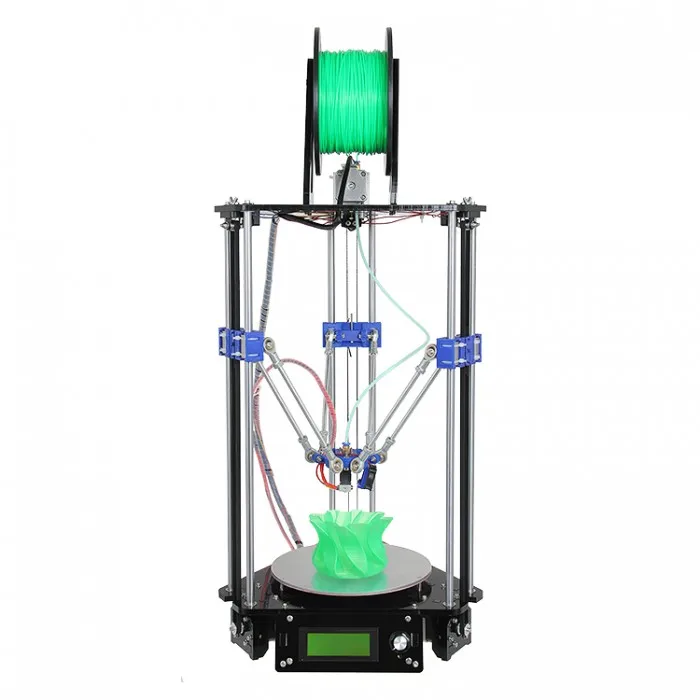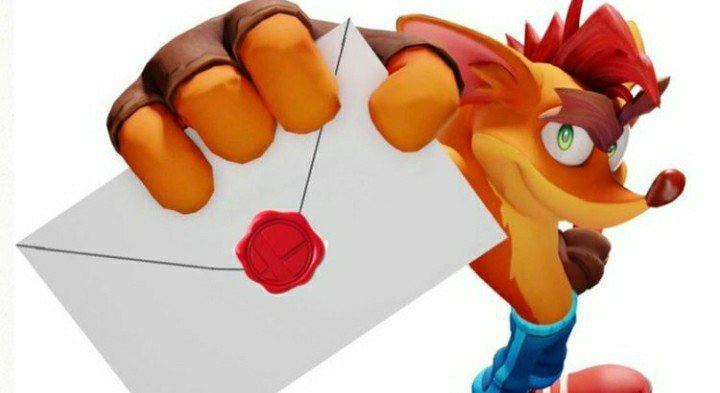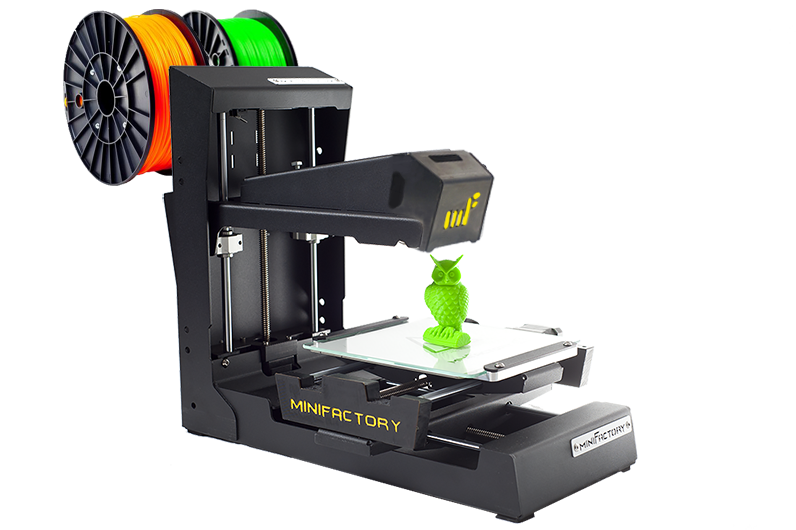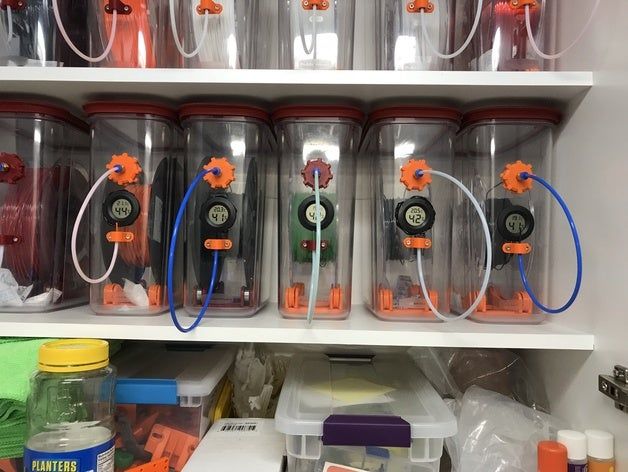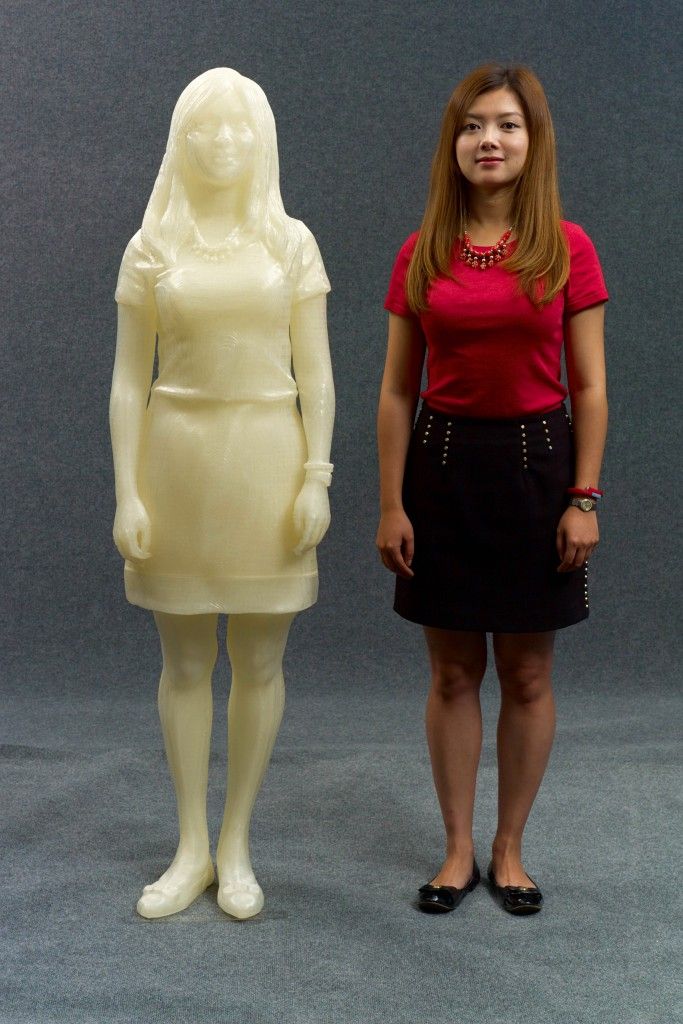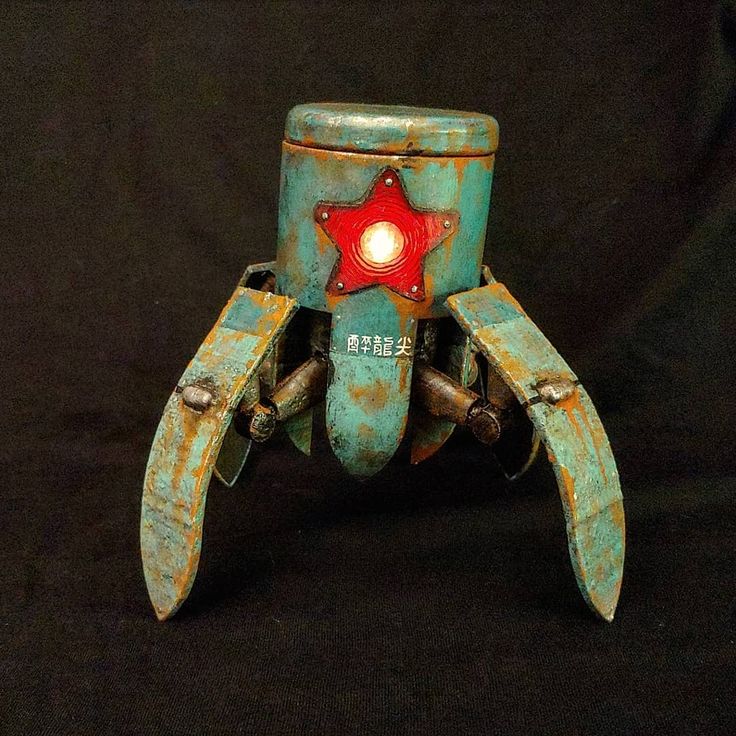Delta mini 3d printer
Monoprice Mini Delta Review 2022
Considering buying a mini 3D printer? Then the Monoprice Mini Delta is a 3D printer you can consider - but is it worth it? Here's why it's NOT!
By Justin Evans
4.1
See Price
If you’re looking to buy your first 3D printer, you probably won’t pick a really expensive one. That’s okay – there are loads of low-cost printers out there; you just have to know how to tell a good model from one that isn’t worth your time. That’s where we come in.
Today, we’ll be taking a closer look at the Mini Delta from Monoprice, a company that claims to be the best-selling 3D printer brand in the world. That doesn’t mean we’ll go easy on them, though! If anything, it means that the Mini Delta is going to have to be better than most of its competitors to win our approval.
| Filament Diameter | 1. |
| Extruders | 1 |
| Supported Materials | PLA, ABS, PETG, Wood |
| Connectivity | USB, SD Card, WiFi |
| Printing Speed | 150mm/s |
| Build Volume | 4.33 x 4.7” |
Table of ContentsShow
Design
As you might guess from the name, the Mini Delta is tiny. It stands just 15” tall and is less than 10” deep. Accordingly, the build area is a little smaller than average: it’s cylindrical and will do for making small-to-medium sized models. Larger objects will have to be assembled from parts afterward.
The build area is open, but this model doesn’t really have any issues maintaining a consistent temperature. You can always create an enclosure for it, though, if you’d like. We were pleased to find that the simple construction provides plenty of scope for modification, though, including possible expanding its build volume slightly.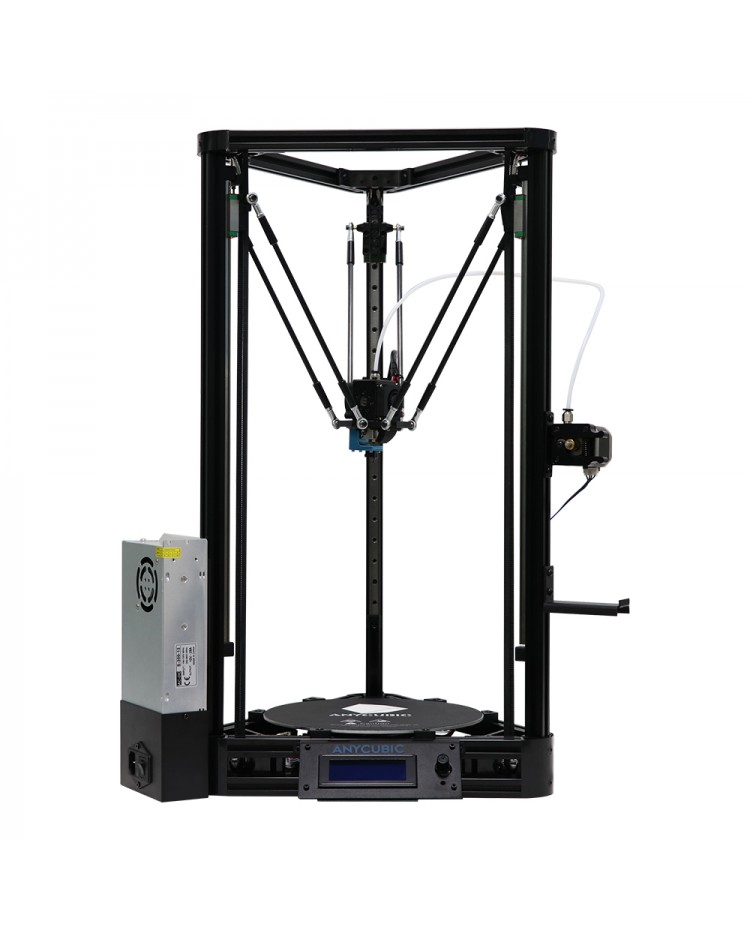
This is the ideal desktop printer for beginners. It has a very small footprint, a cool appearance, and more importantly, a higher top speed than many of its rivals. This does mean that it’s a touch louder, but it’s still quiet enough to use in an office setting.
Printing
You might not think a budget printer like the Mini Delta would have great print quality, but it’s true. By lowering the print speed, you can drastically enhance your models. In fact, at the slowest setting, we found that the layers were far more difficult to discern, and there were far fewer excess strands of filament hanging off.
In addition to PLA and ABS, this printer can create models with PETG (the plastic used in drinks bottles) and wood-infused filaments (although this requires a metal nozzle). This gives the user much better flexibility in terms of what they can build – perfect for beginners or those looking to push the limits of entry-level 3D printers.
With a pretty small build area, this model isn’t perfect for mass-production or commercial use.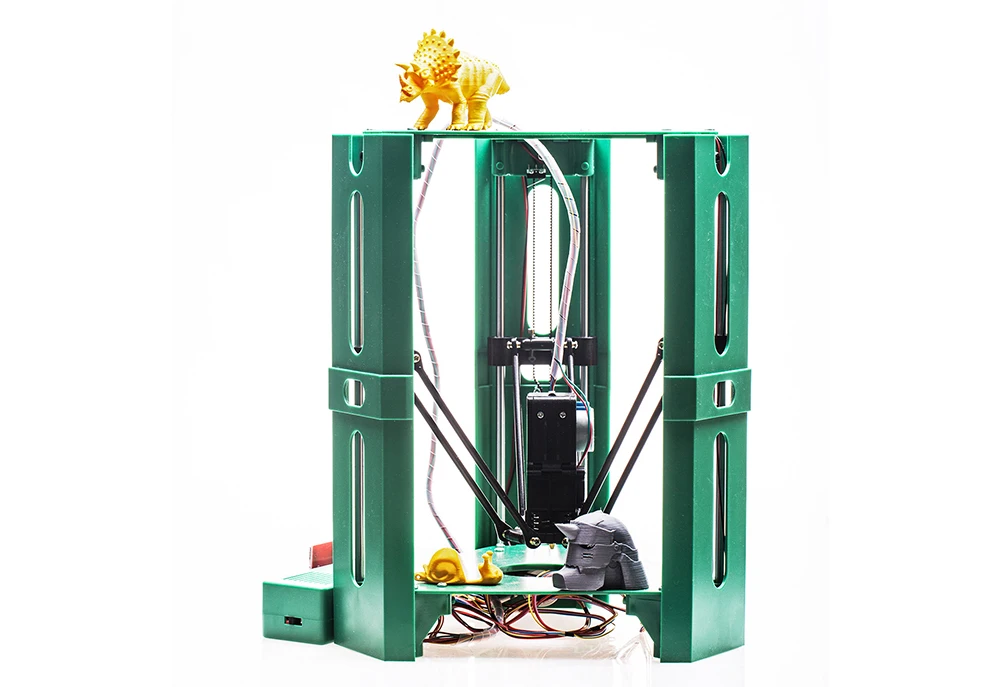 Its vertical shape makes injection-molding impractical too. However, it handles more materials and costs a lot less than some of its rivals, making it a strong choice for the budget-conscious consumer.
Its vertical shape makes injection-molding impractical too. However, it handles more materials and costs a lot less than some of its rivals, making it a strong choice for the budget-conscious consumer.
Features
The front of the unit features a large, vibrant screen. Despite appearances, it’s not touch-controlled: there are three buttons to the right for navigation. In contrast to the cluttered, endless menus we’re used to, the Mini Delta shows just a few options per screen, and there’s never any doubt as to an option’s function.
We were amazed to see WiFi compatibility included in an entry-level printer since it’s usually only found in premium models, and even then, it’s not guaranteed. You can also choose to import models directly from your PC, USB stick or SD card, in case there’s no internet connection where you are.
There’s one more interesting feature: automatic bed-leveling. This can be done with a single click and takes much of the hassle out of preparing a print.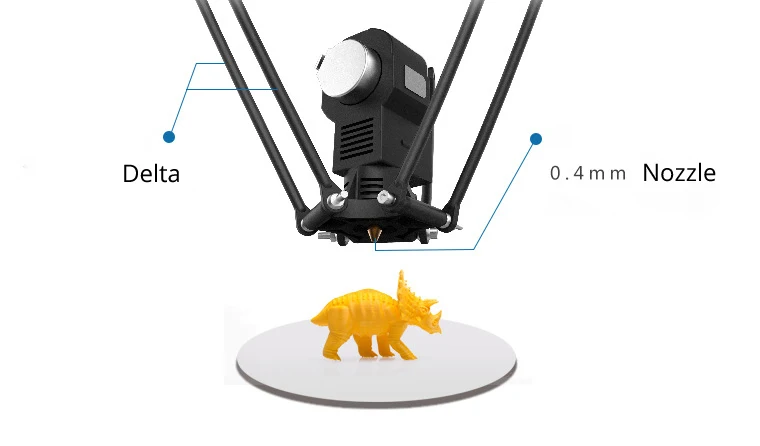 Leveling is often the most difficult part for new users, so we’re glad that this can be done with as little hassle as possible here.
Leveling is often the most difficult part for new users, so we’re glad that this can be done with as little hassle as possible here.
Cost
So, how much do you think this printer costs? We’re willing to bet you guessed too high. The Mini Delta retails for around $160, making it cheaper than even some of the open-source models we’ve covered before. Of course, it lacks some of the build volume, but let’s be real: this is still awesome value.
What’s even better is that you can use any brand of filament. Too often, low-cost 3D printers lock users into a particular proprietary filament, but happily, that’s not the case here. This gives users the freedom to experiment, find their favorite manufacturer, and tailor the printer for perfect prints almost every time.
We know that 3D printing can be a difficult hobby to start, due to the high initial cost. That said, the Mini Delta offers that which no other model does: both the ability to get started for less than $200 and room to grow in the long term.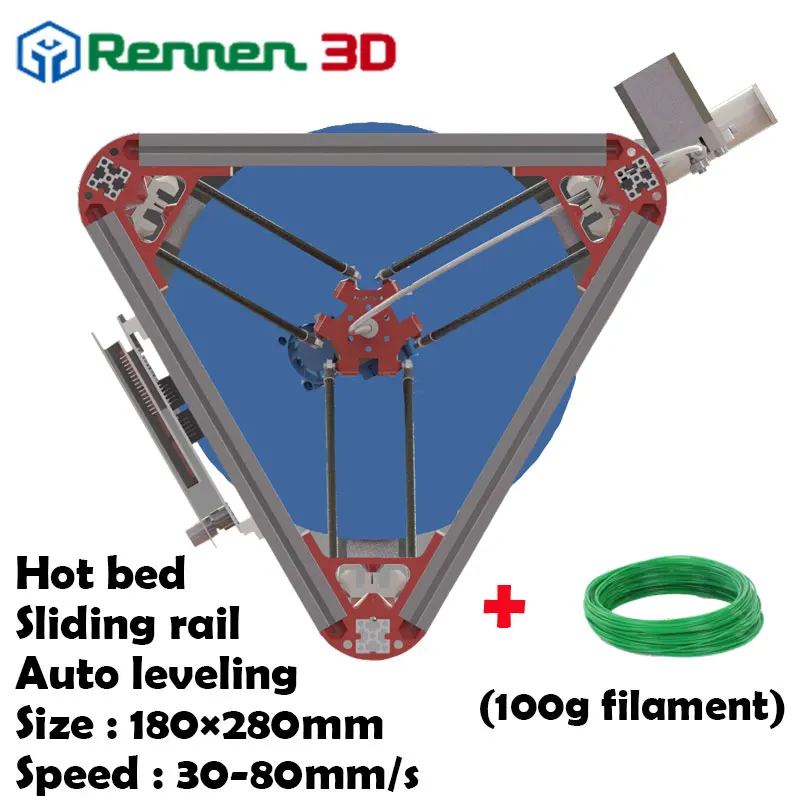 By adding your own modifications, this printer could even compete with some mid-range models.
By adding your own modifications, this printer could even compete with some mid-range models.
Support
Monoprice’s website has general FAQs and troubleshooting information for various 3D printers, but none specifically for the Mini Delta. That said, much of this knowledge is transferable and can be used to diagnose the root cause of any problem you might face.
Getting in touch for technical help couldn’t be easier. There’s a mailing address, phone number, email form, and live chat. Additionally, your printer comes with a year’s warranty and 30-day money back guarantee, which is exceptional considering its low price point. There’s even a dedicated system for requesting a return, although you will have to register first.
This is how you do customer support. If a customer needs help, it’s on the manufacturer to make things as simple as possible, and Monoprice has absolutely done this. Plus, since the Mini Delta is so popular if you can’t find what you need on the website, there are a wealth of unofficial forums that can help you out.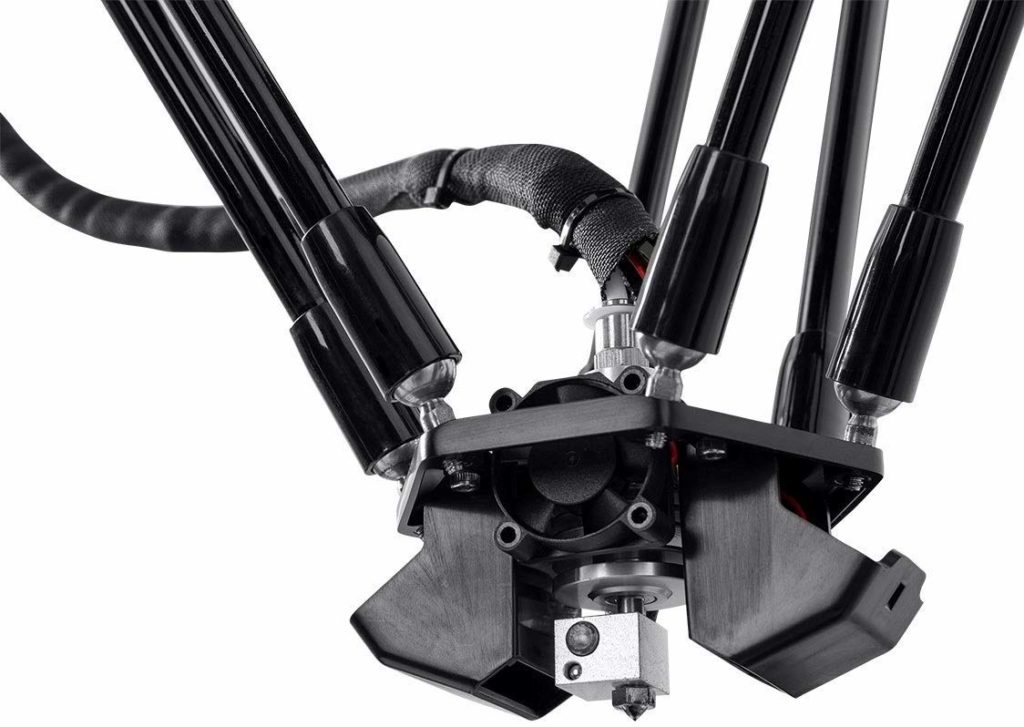
Not the Monoprice that you want? Check our review about the Monoprice Select Mini, this 3D printer maybe the one for you. Read it right here.
M3D Printer Review
Monoprice Mini Delta V2 Review: Fast Junior Prints
When you purchase through links on our site, we may earn an affiliate commission. Here’s how it works.
Cute little printer is fun to watch, but has disappointing output.
(Image: © Tom's Hardware)
Tom's Hardware Verdict
The Monoprice Mini Delta V2 is compact, cute and speedy, but mediocre output quality and bugs hold it back.
Why you can trust Tom's Hardware Our expert reviewers spend hours testing and comparing products and services so you can choose the best for you. Find out more about how we test.
Today's best Monoprice Mini Delta V2 3D Printer and deals
$179.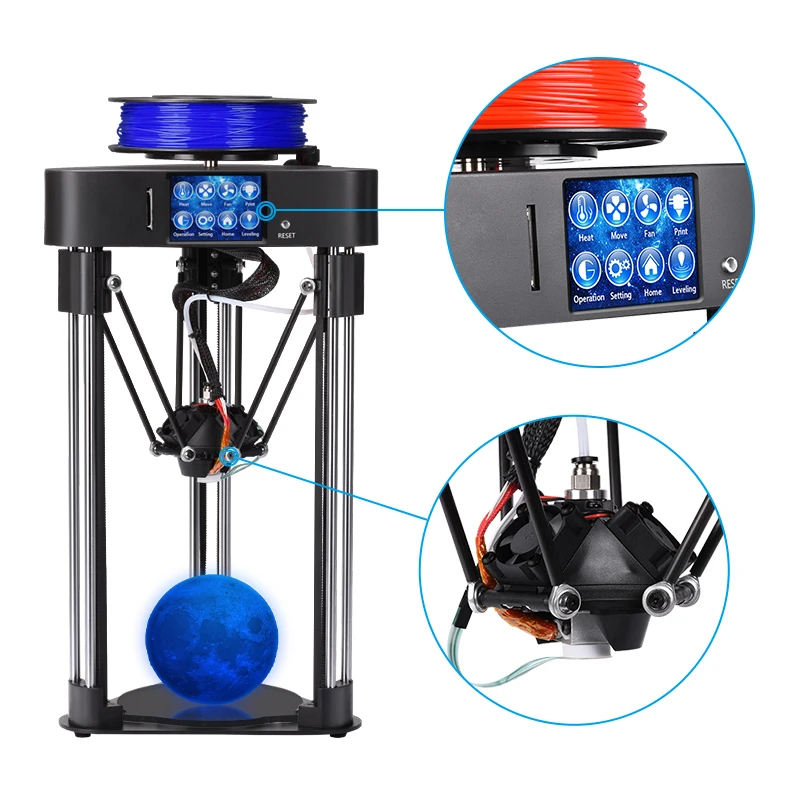 99
99
View
The Monoprice Mini Delta v2 is a small, affordable and super fast printer aimed at beginners. It requires no assembly, has auto bed leveling, a color touch screen, Wi-Fi and easy-to-use slicing software.
Delta printers are amazingly fun to watch, with their three spider-like arms whirling away from the top of the machine. Naturally, I assumed this would be a printer to give to a kid interested in STEM or to use in a classroom situation. But it has a few problems to overcome.
Retailing at $179, the Monoprice Mini Delta v2’s flaws are hard to understand – especially with the outstanding Creality Ender 2 Pro, one of the best 3D printers on the market, available for a few bucks less. The print bed is wobbly, the cooling fan is underpowered, and the machine sometimes needs to be manually turned on and off to clear its memory between prints.
Specifications: Monoprice Mini Delta v2
Swipe to scroll horizontally
| Machine Footprint | 220 x 247 x 355 mm ( 8. 5 x 9.75 x 14 inches) 5 x 9.75 x 14 inches) |
| Build Volume | 110 x 120 mm (ø4.3 x 4.7 inches) |
| Material | PLA/PETG |
| Extruder Type | Bowden |
| Nozzle | .4mm |
| Build Platform | Textured Non-Removable Sticker on Heated Bed |
| Filament Runout Sensor | No |
| Bed Leveling | Full Auto Leveling |
| Connectivity | MicroSD, USB, Wi-Fi |
| Interface | Color Touch Screen |
Monoprice Mini Delta v2: Included in the box
(Image credit: Tom's Hardware)The Monoprice Mini Delta v2 comes with nearly everything you need to get started. You get tools to maintain the printer, a plastic scraper, a spare nozzle, a touch screen stylus, and a microSD card.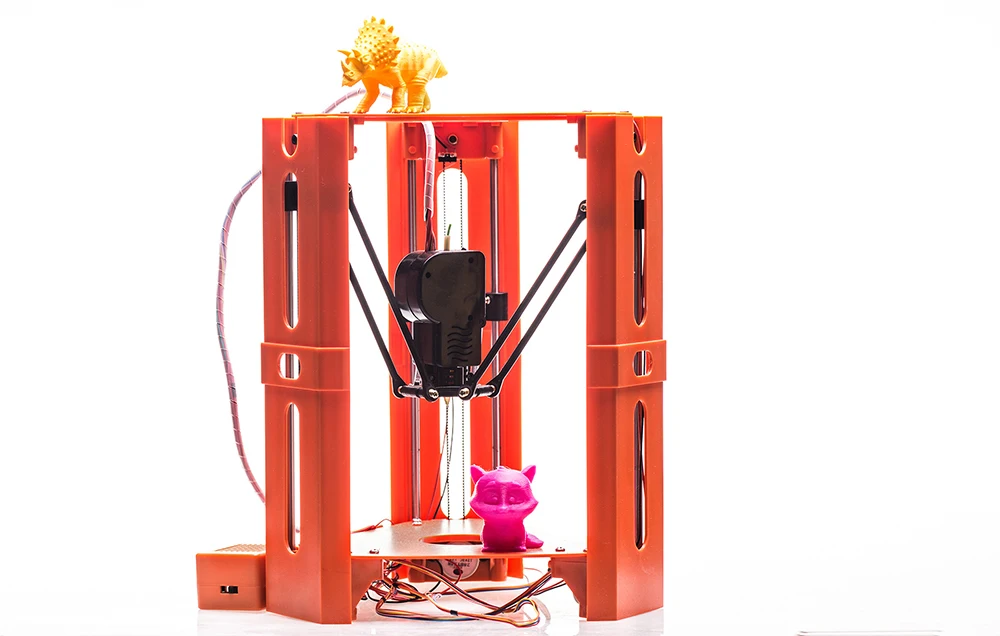 There’s also a small sample of white PLA to print your first model.
There’s also a small sample of white PLA to print your first model.
You do not get a pair of side cutters for trimming the filament or an adapter for the microSD card. The manual is on both paper and a PDF. The microSD also has slicing software – Cura 4.3.0 and WiiBuilder – plus pre-sliced models to print.
(Image credit: Tom's Hardware)The Monoprice Mini Delta v2 has a futuristic design – a triangular black metal frame housing three delicate arms holding the hotend over a fixed round base. All the components are hidden away in the top and bottom compartments. It resembles an hourglass more than a 3D printer.
The PTFE lined hotend is extremely lightweight and takes an M6 nozzle. The tiny cooling fan is underpowered, leaving it unable to print much in the way of overhangs. Monoprice compensated for the fan by turning the wall speed down in the profiles for both WiiBuilder and Cura. More on this later.
(Image credit: Tom's Hardware)The filament holder for the Monoprice Mini Delta v2 is mounted on the side of the printer at a near 90° angle from the extruder.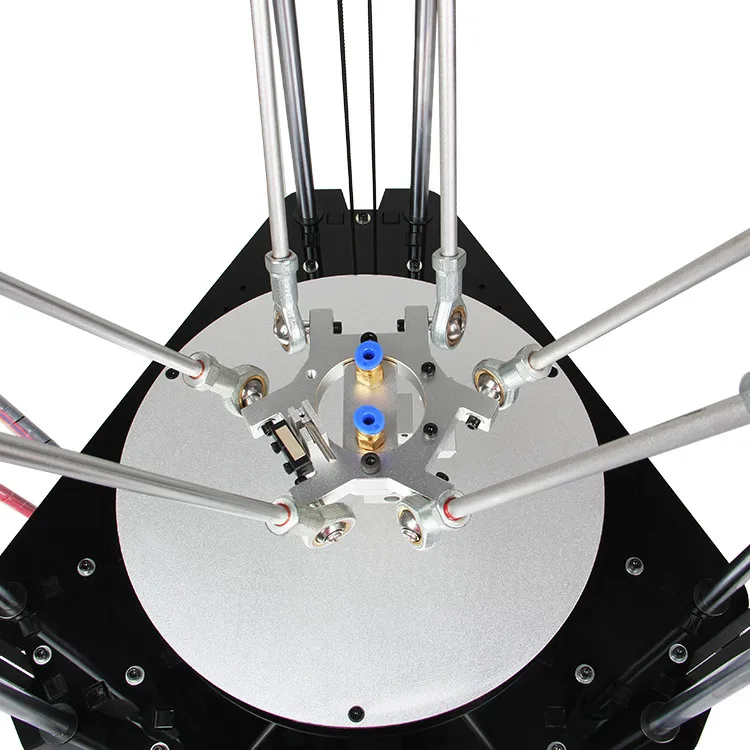 This makes for an awkward filament loading experience and might even put undue strain on the extruder.
This makes for an awkward filament loading experience and might even put undue strain on the extruder.
The wobbly build plate is confounding – three clips loosely hold the plate in place, which causes noticeable horizontal lines in the print. The plate isn’t fully detachable, it’s tethered to the machine’s guts by the bed heater wires.
(Image credit: Tom's Hardware)It would be helpful if the build plate could be removed because the prints stick to it like a beast. I’ve had to chisel a few off with a pallet knife and hammer.
The printer’s interface is delightfully bug free. It is a full color touch screen that displays a thumbnail of models that are sliced in Wii Builder. The menu is easy to understand and use.
(Image credit: Tom's Hardware)Build volume is limited to 110mm diameter by 120mm tall, which is pretty darn small. Several prints that I tested out had to be sized down to fit.
However, something is glitchy in the firmware that causes the machine to get hung up after a print. The only solution I’ve found is to turn the printer on and off after a print.
The only solution I’ve found is to turn the printer on and off after a print.
Delta vs Cartesian: Monoprice Mini Delta v2
It’s worth mentioning that this printer, like other Delta style machines, is quite a bit faster than Cartesian style machines.
Cartesian printers – like the Anycubic Kobra or Creality Ender 3 Pro – are named because their movements use the same Cartesian coordinate system found in geometry (and Minecraft). These printers have three separate axes: X, Y and Z. Each axis can only move in two directions: side to side for X, back and forth for Y or up and down for Z.
Delta printers have three arms placed at three points of an equilateral triangle around its circular build plate. Each arm is equal and can move up and down, forward and back, plus side to side. This allows for smaller and faster movements.
For example, a Benchy sliced on Cura 4.13.1 for the Monoprice Mini Delta v2 takes 1 hour and 13 minutes, while the exact same Benchy takes 1 hours 41 minutes on a Creality Ender 3 Pro.
Assembling the Monoprice Mini Delta v2
The Monoprice Mini Delta v2 is 99% assembled. You only need to unpack it, slide the filament holder in place, plug it in and go.
Leveling the Monoprice Mini Delta v2
(Image credit: Tom's Hardware)Leveling the Monoprice Mini Delta v2 is very simple. When you first unbox the machine, you should run a Delta Calibration, located under the Prepare Menu. The printer will take a few minutes to check the flatness of the build surface and determine how to compensate to give you a flat first layer.
Instead of a probe on the hotend, the machine has three buttons under the plate. To level itself, the nozzle double taps 9 points around the plate, clicking the buttons underneath.
The Delta Calibration isn’t perfect; you’ll still need to double check the Z Offset. Place a piece of paper over the build plate and press Z Offset in the Prepare Menu. The printer will tap several points around the built plate, then settle on the center point at 0mm.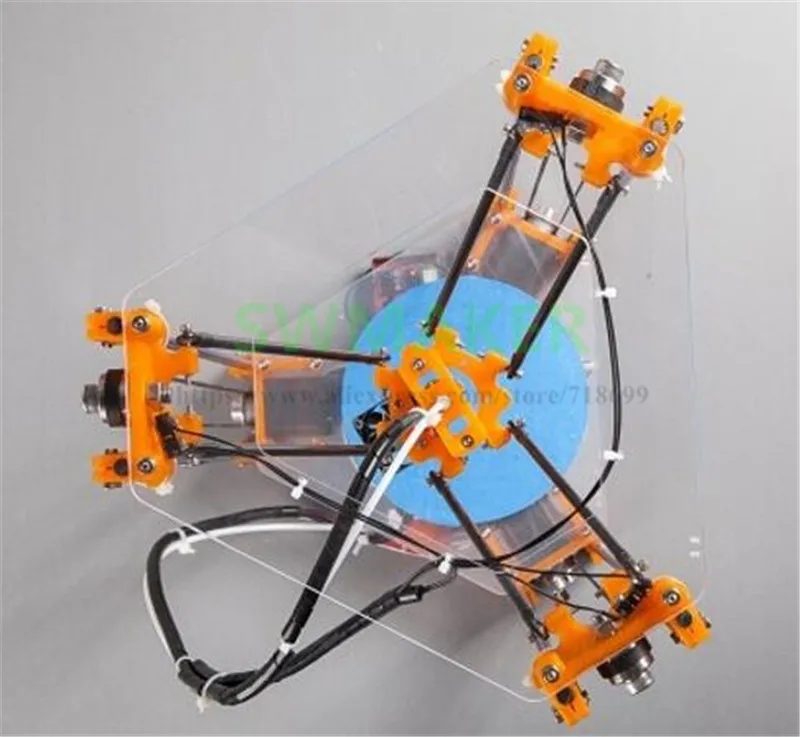 Adjust the Z Offset with the menu buttons until the paper is held gently by the nozzle but can still move.
Adjust the Z Offset with the menu buttons until the paper is held gently by the nozzle but can still move.
Delta calibration and adjusting the Z Offset only need to be done when you feel the need, like after printer maintenance. The printer will also do a very brief level check before each print to make sure it’s all lined up.
Using Wi-Fi on the Monoprice Mini Delta v2
There’s also a smartphone app called PoloPrint Pro. However I was unable to get it to connect. It doesn’t
The Monoprice Mini Delta v2 has Wi-Fi capabilities that allow it to send files from your computer while using WiiBuilder. The printer will ask if you want to connect to Wi-Fi during setup.
WiiBuilder was able to find the Delta Mini v2 by using a local web address. Keep a microSD card in the printer and you can send files remotely over your home’s Wi-Fi. Once the file is received, it will automatically start printing.
There’s no way to hook a camera into this system, but a Wyze camera or something similar is handy for monitoring your prints.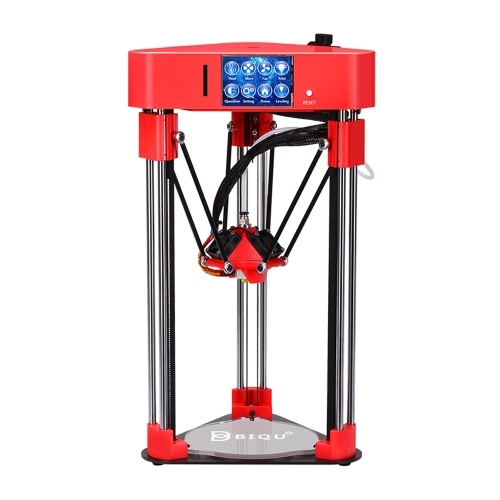
If you prefer to use Cura, you can slice your files, save them as a stl files, then load the files into WiiBuilder (do not slice it again) and send them wirelessly. It’s an extra step, but way better than walking an SD card back and forth.
Preparing Files and Uploading with Wi-Fi
The Monoprice Mini Delta v2 comes with a copy of WiiBuilder 2.1 and Cura 4.3.0. Both programs come with custom profiles to squeeze as much quality from the machine as possible.
(Image credit: Tom's Hardware)Both slicers have profiles that restrict wall speed to 25mms, which helps compensate for the underpowered cooling fan. Normally, Cura calculates wall speed at 50% of the overall printing speed. Below are two Benchies to show why you need to stick to the profile: the light blue was printed with the provided Cura profile while the dark blue was printed using Cura and a default standard profile at 65mms. Notice how the overhang on the bow is extremely rough with a wall speed of 32.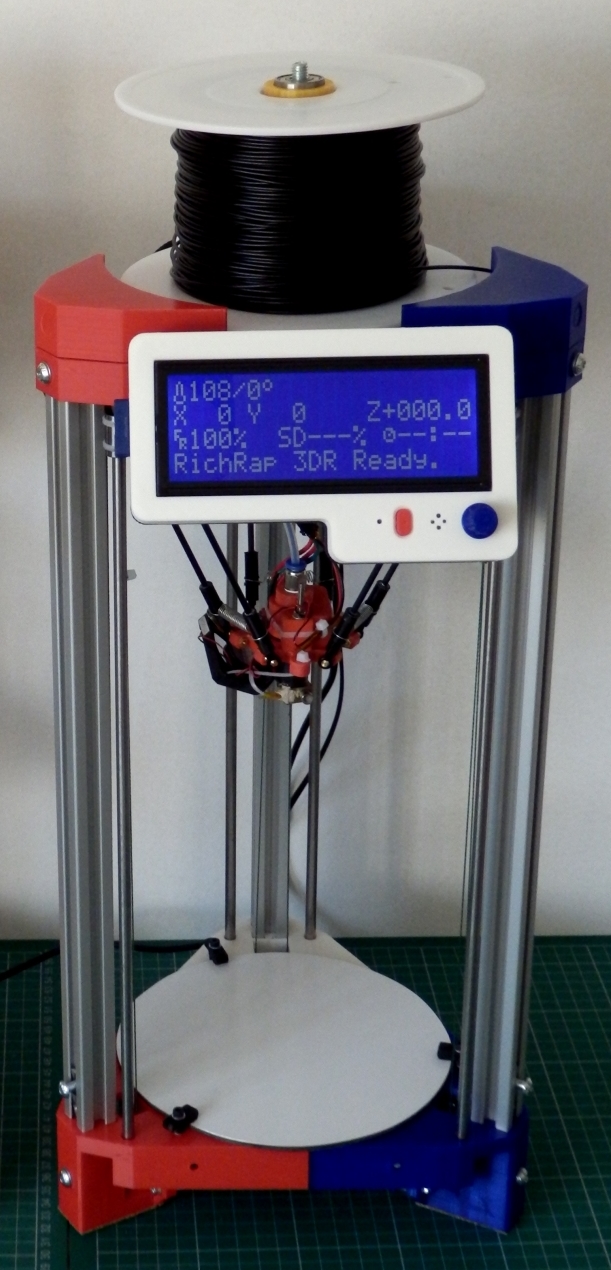 5 mms.
5 mms.
Normally I like to stick to Cura, but in this case WiiBuilder is worth using for its built-in Wi-Fi capabilities. To access Wi-Fi, slice your model then click the Wi-Fi symbol on the menu bar. This opens a WLAN Connection. Click the connect button, then upload. The printer will automatically start the print as soon as it receives it.
(Image credit: Tom's Hardware)Note that the Monoprice Delta Mini v2 needs a microSD card for Wi-Fi printing to work – it doesn’t have internal storage.
Printing on the Monoprice Mini Delta v2
The Monoprice Mini Delta v2 includes 7 pre-sliced models of toys – a good indicator of their target market. All the files printed in a few hours with .2mm layers, no support and rafts turned on. I didn’t think the quality was all that great, which is odd since manufacturers try to really impress you with that first print.
All the files are old classics from Thingiverse. I recognized Lucky Cat, Dorus the Dragon and LFS_elephant.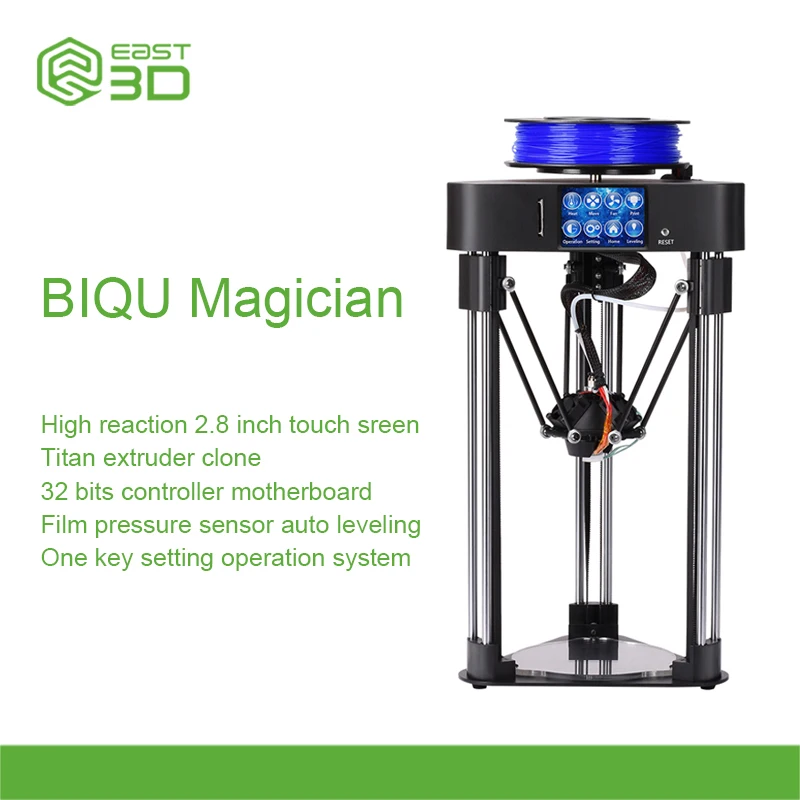 In my testing, I printed them in Inland Turquoise PLA .
In my testing, I printed them in Inland Turquoise PLA .
I wanted to see how the Mini Delta V2 could do without a raft, so I printed a vase mode rocket by DeJennes in PolyLite Yellow PLA. This model doesn’t have any overhangs and printed beautifully.
(Image credit: Tom's Hardware)Here’s ChaosCoreTech’s Cute Unicorn, another print without overhangs. Once again, it printed really nicely and ProtoPasta’s recycled Still Colorful 002 PLA helped hide some of the layer lines, but not the occasional extrusion gaps in the mane.
(Image credit: Tom's Hardware)The last print surprised me. The Mandalorian Support Free Remix by Iczfirz usually prints great on any machine. But the Monoprice Mini Delta v2 wasn’t able to handle the overhangs on the weapons and cape with its tiny cooling fan. I added supports, which helped a little. These two are printed in Matterhackers Build Series Silver PLA. In the pictures below, Left Mando had no supports, but Right Mando had supports.
Monoprice’s Mini Delta v2 is vexing. On paper, it has everything I want in a printer: it’s cheap, fast, compact and easy-to-use. It has auto leveling, built in Wi-Fi and ships with a custom slicer profile. It’s literally plug and play. The size and price point suggest that it’s a good value for beginners and kids interested in STEM.
But why should you accept low print quality when there are other budget printers that actually perform well with all kinds of models? The Creality Ender 2 Pro is one of those machines, and is our pick for best 3D Printer under $200.
If you think the Monoprice Mini Delta v2 is just too intriguing to pass up, I would highly suggest checking out this Facebook group dedicated to modding the machine. They have clever suggestions on how to upgrade the printer, tune it with a guitar app or make 3D printed clips to steady the bed.
Denise Bertacchi is a Contributing Writer for Tom’s Hardware US, covering 3D printing.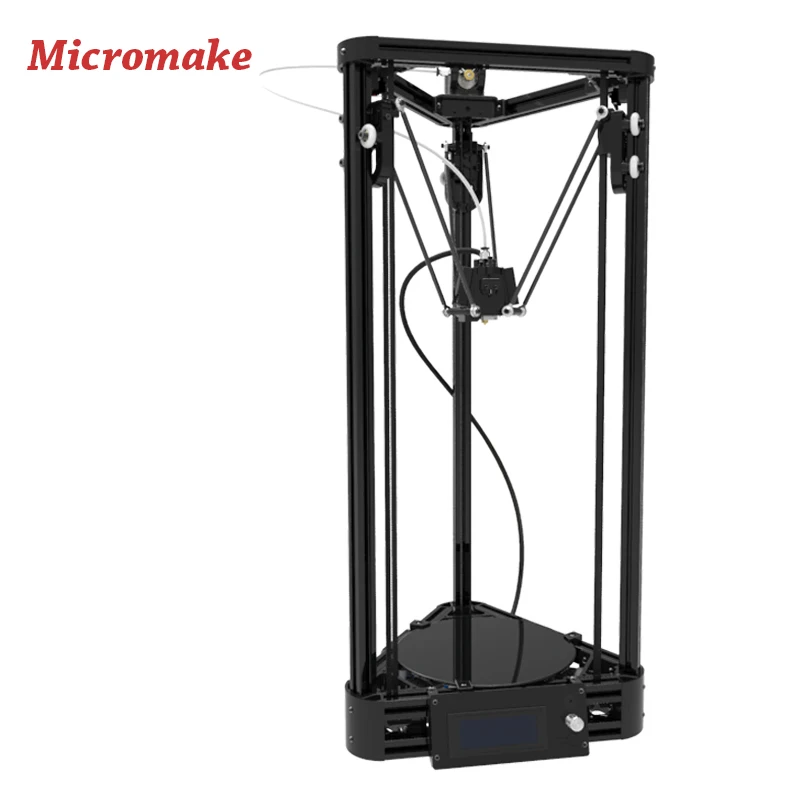
City Frankfurt Am MainAach B TrierAach, HegauAachenAalenAarbergenAasbuettelAbbenrodeAbenbergAbensbergAbentheuerAbrahamAbsbergAbstattAbtsbessingenAbtsgmuendAbtsteinachAbtswindAbtweilerAchbergAchernAchimAchslachAchstettenAchtAchtelsbachAchterwehrAchtrupAckendorfAddebuellAdelbergAdelebsenAdelheidsdorfAdelmannsfeldenAdelschlagAdelsdorfAdelsheimAdelshofen, Kr FuerstenfeldbruckAdelshofen, MittelfrAdelsriedAdelzhausenAdenauAdenbachAdenbuettelAdendorfAderstedtAdlersteigeAdligstadtAdlkofenAdmannshagen-BargeshagenAdorf/Vogtl.AebtissinwischAerzenAffalterbachAffingAffinghausenAfflerAgathenburgAgethorstAglasterhausenAhamAhausAhausenAhlbeckAhlden (Aller)Ahlefeld-BistenseeAhlenAhlerstedtAhlsdorfAhlstaedtAhnatalAhnebyAhnsbeckAhnsenAholfingAholmingAhorn, BadenAhorn, Kr CoburgAhorntalAhrbrueckAhrensboekAhrensburgAhrensfeldeAhrenshagen-DaskowAhrenshoeftAhrenstedtAhrenvioelAhrenvioelfeldAicha Vorm WaldAichachAichelbergAichenAichhaldenAichstettenAichtalAichwaldAidenbachAidhausenAidlingenAiglsbachAilertchenAindl ing
Techno Print 3D Company
This is our first review of the most popular and inexpensive 3D printers for 2020. The list will include the best-selling devices in two price ranges (up to 30 tr and up to 60 tr). Printers working with both plastic filament (FDM) and photopolymers (LCD/DLP) will be presented. This list will always be up to date, as it is periodically updated and supplemented. Read more→
The list will include the best-selling devices in two price ranges (up to 30 tr and up to 60 tr). Printers working with both plastic filament (FDM) and photopolymers (LCD/DLP) will be presented. This list will always be up to date, as it is periodically updated and supplemented. Read more→
The Chinese company Dazz3D announces the launch of the project on KickStarter and accepts pre-orders for Dazz3D Basic and Dazz3D Pro 3D printers. These revolutionary new devices are aimed at both the professional and amateur markets. Read more→
We all know that precise calibration of the 3D printer desktop is the foundation and the key to successful printing on any FDM printer. In this article we will talk about the main and most popular ways to level the "bed". So, as mentioned above, 3D printing without desktop calibration is impossible. We face this process Read more→
It's hard to go through a day today without hearing about 3D printing technology, which is bursting into our lives at an incredible speed.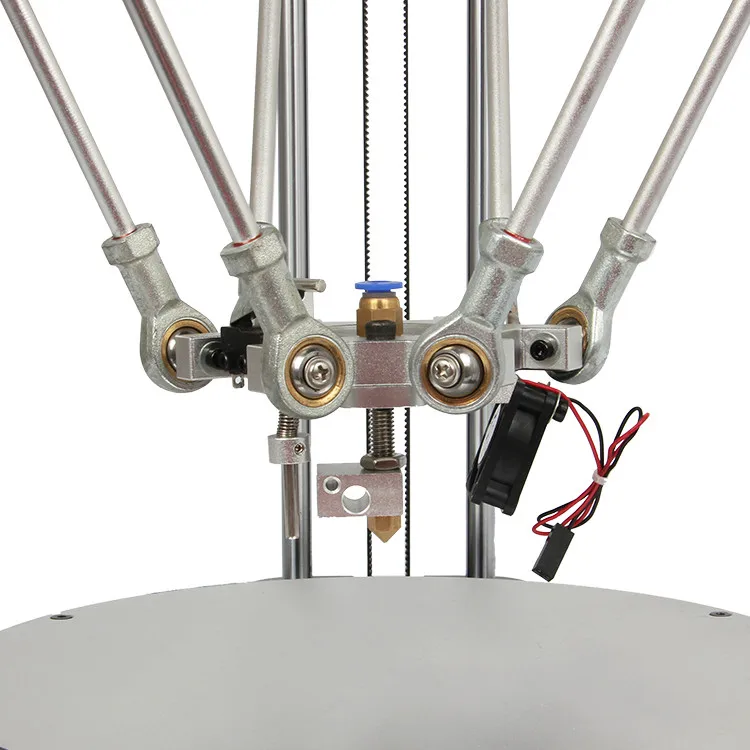 More and more people around the world are becoming addicted to 3D printing technology as it becomes more accessible and cheaper every day. Now almost anyone can afford to buy a 3D printer, and with the help of Read more→
More and more people around the world are becoming addicted to 3D printing technology as it becomes more accessible and cheaper every day. Now almost anyone can afford to buy a 3D printer, and with the help of Read more→
The FormLabs Form 2 and Ultimaker 3 are perhaps the most popular 3D printers today, capable of high quality printing with incredible surface detail. Moreover, these two devices use completely different technologies, and therefore, there are a lot of differences between them. Many will say that it is wrong to compare them or Read more→
XYZprinting, best known for its daVinci line of desktop 3D printers, is bringing five new devices to the professional and industrial environment. One will use laser sintering technology, the second full color inkjet printing and three DLP machines. First of all, the novelties will be of interest to dentists and jewelers. Read more→
Cleaning the nozzle of a 3D printer is a fairly common process that any user of such a device has to deal with.